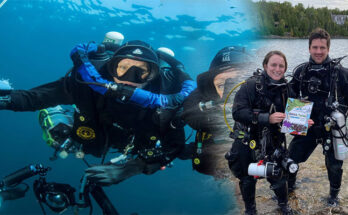Beneath the surface of the ocean, where words are lost to the waves and silence reigns supreme, scuba divers rely on a language of their own—a language of hand signals. Mastering scuba diving hand signals is not only a matter of safety but also a way to enhance the shared experience of exploring the underwater world. In this article, we dive into the depths of underwater communication, exploring the essential hand signals that every diver should know.
The Significance of Hand Signals
Scuba diving is a thrilling and often serene activity that takes you to a world of silence and weightlessness. However, the underwater environment can also be fraught with challenges and potential hazards. Communicating with your dive buddy or dive team is crucial for safety, enjoyment, and successful exploration. Here’s why hand signals are indispensable:
- Silent Communication: Sound travels poorly underwater, making verbal communication impractical. Hand signals are the primary means of conveying messages while diving.
- Minimal Disturbance: Using hand signals minimizes disturbances to the delicate underwater ecosystem. Divers can communicate without creating noise that might frighten or disturb marine life.
- Safety First: Effective communication is essential for coordinating tasks, sharing information about the dive site, and signaling emergencies. In emergency situations, knowing the right hand signal can make a life-saving difference.
The Basics of Scuba Diving Hand Signals
- OK Sign: Form a circle by touching your thumb and index finger while extending the other three fingers. This universally recognized signal means “I’m okay” or “Are you okay?”
- Thumbs Up/Down: A thumbs-up signal means “Ascent” or “Going up.” A thumbs-down signal indicates “Descent” or “Going down.”
- Hand to Ear: To signal “I can’t hear you,” cup your hand around your ear and look at your buddy with a questioning expression.
- Pointing: Pointing in a specific direction with your index finger indicates that you want to draw your buddy’s attention to something of interest. Pointing to your eyes and then to the object emphasizes the importance of looking closely.
- Out of Air: The “Out of Air” signal involves tapping your head with an open palm, indicating that you or your buddy is low on air and should ascend.
- Safety Stop: Extend an open hand, palm down, and move it in an upward motion to signal a safety stop. This indicates that you or your buddy should perform a safety stop before ascending to the surface.
- Share Air: To convey “Share Air,” extend your hand with an open palm and bring it to your mouth. This tells your buddy that you need to share air from their alternate air source.
- Stop: Hold one hand flat, palm facing downward, and move it in a horizontal back-and-forth motion. This signals “Stop” and is often used when you want to halt and maintain your current depth.
Advanced Hand Signals
In addition to these basic hand signals, there are more specialized signals for communicating specific messages, such as indicating the need for assistance, pointing out marine life, or communicating with dive masters or guides. Divers should consider taking advanced diving courses to learn these specialized signals and enhance their underwater communication skills.
Practice Makes Perfect
Mastery of scuba diving hand signals requires practice. Before each dive, divers should review signals with their buddy and ensure they have a clear understanding. By doing so, they enhance their safety and the enjoyment of their underwater adventures. Effective underwater communication fosters a sense of camaraderie among divers and allows them to share the wonders of the deep, from colorful coral reefs to elusive marine creatures.
Scuba diving hand signals are a language of their own—a means of communicating, ensuring safety, and enhancing the shared experience of exploring the underwater world. Divers who master these signals can explore the ocean depths with confidence, knowing that they have the means to convey vital information and share the beauty and mysteries of the underwater realm. So, remember to review your hand signals before your next dive and embark on your underwater adventures with the power of deep communication at your fingertips.





